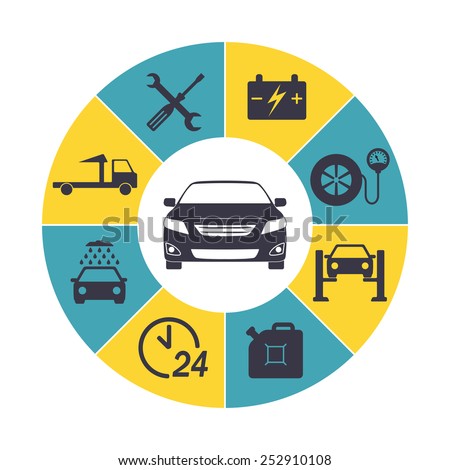Examining Your Auto'S Warning Indicators: What They Actually Communicate
Examining Your Auto'S Warning Indicators: What They Actually Communicate
Blog Article
Material Develop By-Boye Kejser
When you're behind the wheel, those radiant caution lights on your dashboard can be a bit puzzling. Do you recognize what they're attempting to inform you regarding your vehicle's health and wellness? Understanding the relevance of these lights is essential for your safety and the longevity of your vehicle. So, the next time one of those lights turns up, wouldn't you want to understand its message properly and take the essential actions to address it?
Common Warning Lighting and Interpretations
Determine common warning lights in your car and comprehend their significances to ensure safe driving.
The most common warning lights include the check engine light, which signals concerns with the engine or exhausts system. If this light begins, it's essential to have your vehicle inspected promptly.
The oil stress alerting light suggests reduced oil stress, needing immediate focus to avoid engine damages.
A flashing battery light could suggest a faulty charging system, possibly leaving you stranded otherwise dealt with.
The tire pressure monitoring system (TPMS) light alerts you to reduced tire stress, impacting lorry stability and gas performance. Neglecting cardetailingcourseauckland might bring about harmful driving problems.
The ABS light suggests a trouble with the anti-lock braking system, compromising your ability to quit quickly in emergency situations.
Lastly, find out here now advising light warns of engine overheating, which can result in serious damage otherwise resolved swiftly.
Understanding these common caution lights will certainly help you deal with problems immediately and preserve safe driving problems.
Value of Prompt Interest
Understanding the common caution lights in your auto is just the primary step; the importance of quickly resolving these cautions can not be highlighted sufficient to ensure your safety and security when driving.
When a caution light brightens on your control panel, it's your car's way of connecting a prospective problem that needs attention. Overlooking these warnings can cause much more severe troubles down the road, endangering your security and possibly costing you much more in repairs.
Motivate attention to alerting lights can stop malfunctions and accidents. As an example, a blinking check engine light can suggest a misfire that, if left unattended, can cause damage to the catalytic converter. Addressing this immediately can save you from a costly repair service.
Likewise, a brake system advising light could signify reduced brake liquid or used brake pads, crucial parts for your safety and security when driving.
Do It Yourself Troubleshooting Tips
If you observe a caution light on your control panel, there are a few DIY repairing ideas you can try before seeking expert aid.
The initial step is to consult your car's guidebook to comprehend what the certain warning light indicates. Often car polishing auckland can be as simple as a loose gas cap setting off the check engine light. Tightening up the gas cap may fix the trouble.
Another usual concern is a reduced battery, which can activate numerous cautioning lights. Inspecting the battery links for rust and guaranteeing they're safe and secure may deal with the trouble.
If a warning light continues, you can try resetting it by disconnecting the cars and truck's battery for a few minutes and then reconnecting it. Additionally, inspecting your automobile's liquid levels, such as oil, coolant, and brake fluid, can assist repair advising lights associated with these systems.
Conclusion
To conclude, recognizing your vehicle's caution lights is important for keeping your vehicle running efficiently and securely. By without delay attending to these notifies and recognizing what they imply, you can avoid expensive fixings and possible malfunctions.
Keep in mind to consult your cars and truck's guidebook for specific information on each advising light and do something about it accordingly to make sure a hassle-free driving experience.
Keep notified, stay risk-free when traveling!
